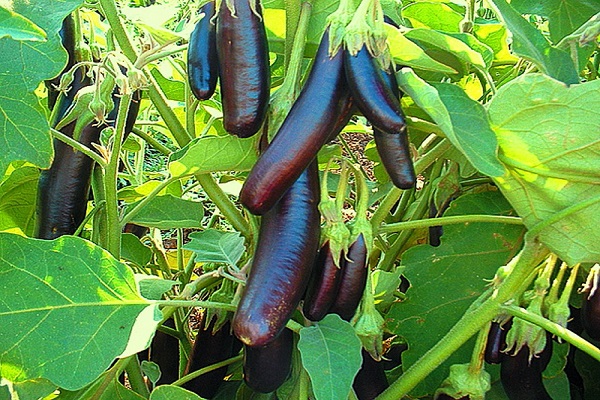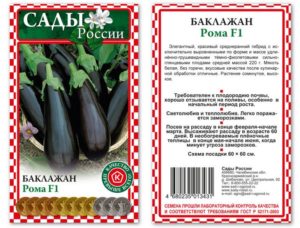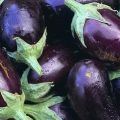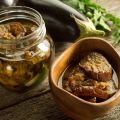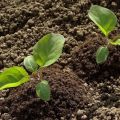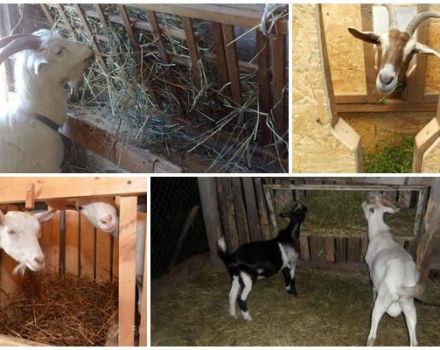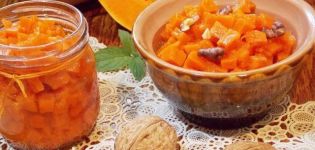Description of the eggplant variety King of the North F1, advantages and disadvantages
Eggplant variety King of the North F1 is the earliest. This crop is resistant to light frosts, is characterized by increased productivity and excellent taste. From the appearance of the first shoots to harvest, no more than 100 days pass. This crop was bred to grow in the northern regions, but it grows well in temperate climates.
Description and characteristics of the variety
King of the North F1 is an unpretentious plant that tolerates light frosts well. The bushes of the hybrid are quite powerful and strong, when planted on the ground, the height of the bushes does not exceed 70 cm, so they do not need to be tied up. If the crop is planted in a greenhouse, then the bushes can grow over 1 meter tall. In this case, a garter is needed.
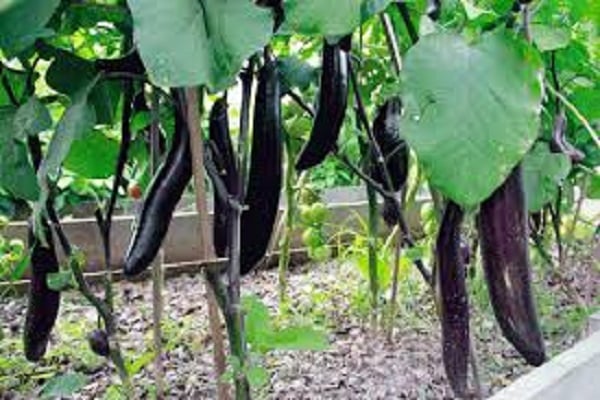
The stems are greenish-purple, bright in color. The leaves have purple streaks. Numerous flowers, delicate lilac color. The fruits are round, elongated. Many summer residents compare this variety with sausages. The length of the fruit can reach 30 cm, the diameter is 7 cm. But there are fruits reaching a length of 45 cm.
The peel on the eggplant has a pronounced purple color, thin and glossy. The pulp is white, of medium density, without coarse veins and bitterness. The plant bears fruit for an average of 2 months. When grown in greenhouse conditions, the fruiting period is even longer.
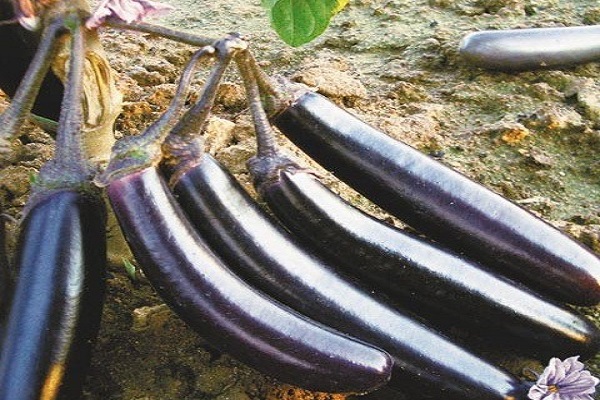
Eggplant of this variety contains a lot of calcium, iron and phosphorus. They help to normalize metabolism and remove harmful cholesterol from the body.
The blue King of the North F1 variety has no bitterness, the fruits do not need to be soaked in salted water before cooking.
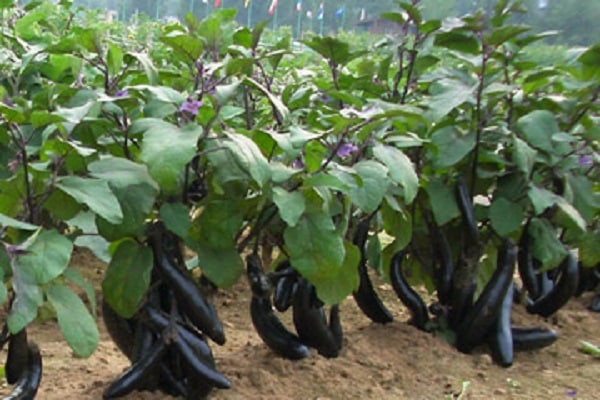
Advantages and disadvantages
The hybrid has many advantages, thanks to which summer residents like to plant this variety.
- Frost resistance. The variety is resistant to temperature fluctuations and light frosts, which are common in early summer. Low temperatures have no effect on eggplant yield.
- Excellent germination. Even when planting seeds without preliminary preparation, up to 70% of the planting material is included.
- Unpretentiousness. No need to waste time tying plants and forming a bush. The hybrid tolerates transplanting well and quickly gets used to unusual conditions.
- Resistance to fungal diseases that often affect eggplants.
- Excellent taste. Eggplants of this variety have tender pulp, completely without bitterness. This vegetable is suitable for making snacks and canning.
- Attractive appearance and long-term storage.
- High productivity. Even in bad weather, they collect up to 15 kg of blue from 1 m².
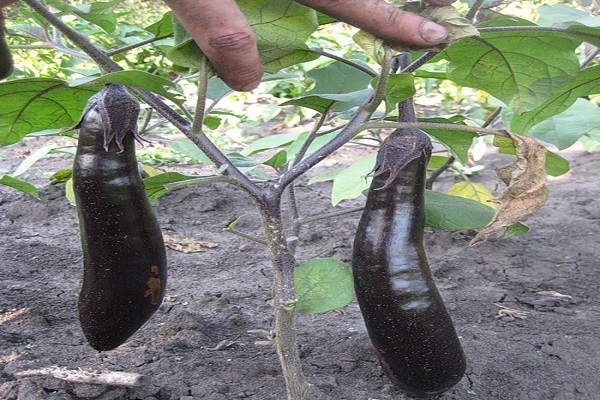
The King of the North also has minor flaws. Some housewives do not like the elongated shape of the fruit, which is inconvenient to cut. The disadvantages include the fact that the fruits often get dirty on the ground, due to their length.
It should be borne in mind that the King of the North is a hybrid. It will not be possible to grow seedlings from self-collected seeds, so every year you need to buy planting material.
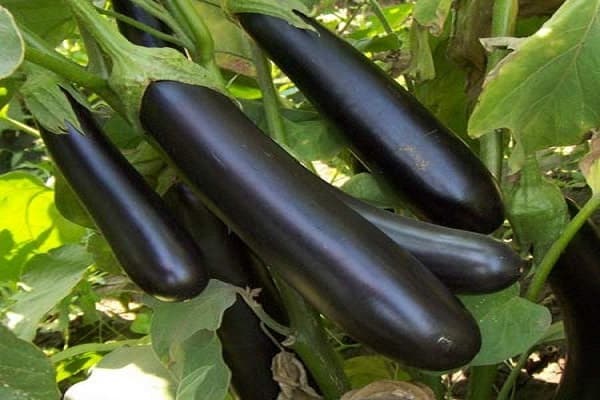
Growing seedlings
The king of the north is characterized by good germination, but preliminary seed preparation will not hurt. It is performed in several stages.
- A teaspoon of salt is dissolved in a liter of warm water, the planting material is poured there and mixed well. Those seeds that have surfaced are poured out.
- The remaining seeds are dipped in hot water for 3 minutes. The temperature should be no higher than 45 degrees.
- After hot water, the planting material is dipped for 20 minutes in a weak solution of potassium permanganate.
A moistened cotton napkin is placed on a saucer, and seeds are placed on top. They put the saucer in a warm place, cover it with another damp cloth on top.
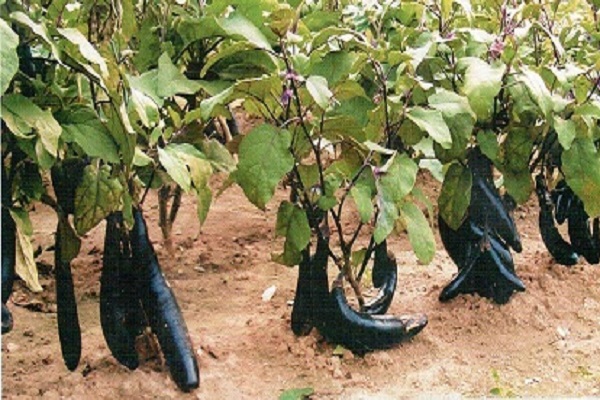
After 3-4 days, when the sprouts hatch, the eggplants are planted in the soil, at a distance of 5 cm from each other. 1-3 seeds are planted in the hole, weak shoots are then removed. Use special containers, pressed peat pots or simply flower pots. Before planting, the soil must be fried in the oven.
When the sprouts have 3 leaves, they dive. This is done carefully, since the root system of plants is weak.
To prevent fungal diseases, crushed tablets of activated carbon or chalk are added to the planting substrate.
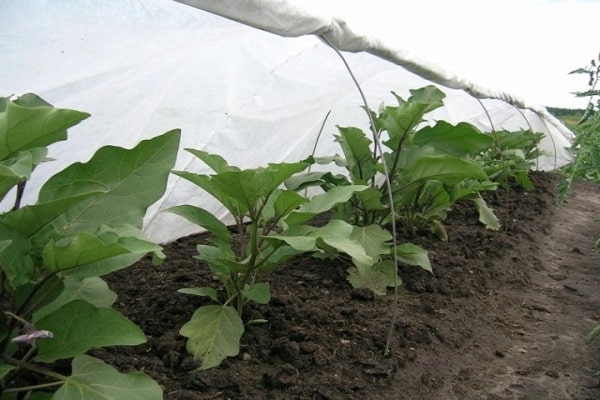
Landing and preparation for it
Seedlings are hardened before planting in the ground. To do this, the pots are first taken out for 2-3 hours outside, then this time is gradually increased to 10 hours. The pots should not be placed in a draft.
The eggplant planting site should be open, sunny and sheltered from the wind. You can not plant blue ones in places where nightshades grew before.

Landing is carried out when the average daily temperature is at least 20 degrees. This usually occurs in mid-June. By this time, there should be 7-8 leaves on each sprout. If there are buds or flowers on the seedlings, this is not an obstacle to planting in open ground.
The bushes are planted at a distance of 50 cm from each other, the distance between the rows should be about 60 cm.The depth of the holes is 15 cm.
If the seedlings were planted in peat pots, then the eggplants are dropped into the holes along with the container.
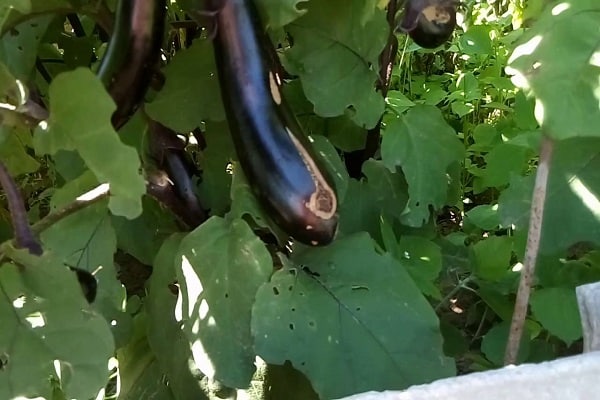
Eggplant care
The king of the north refers to unpretentious hybrids, but if the summer resident wants to get a large harvest, minimal care for the plants is necessary.
Watering
All eggplants love water, but it's important not to pour them too much. If the summer is not hot, then the plants are watered every three days. At temperatures above 30 degrees, you need to water the beds every day. The best time to water is in the morning. Pour some water under the root, it is undesirable if the liquid gets on the leaves.
The first week after planting in the ground, the blue ones do not water. Abundant watering at this time leads to a decrease in plant immunity.
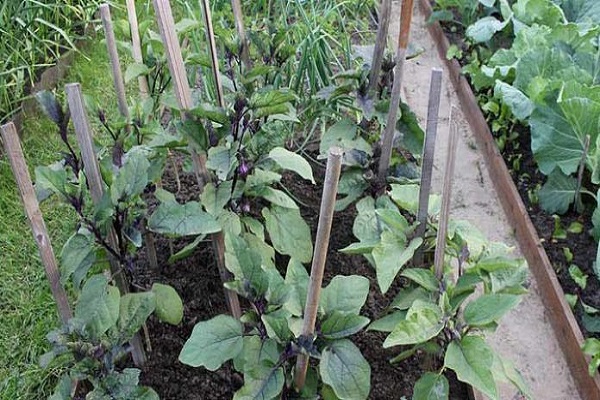
Mulching
Mulch is essential for this eggplant variety to protect the fruit from contamination. In addition, due to mulching, moisture is retained for a long time in the soil. Mulch helps the summer resident and save time on weeding the beds.

Top dressing
You need to feed the hybrid every two weeks. After that, the beds are watered abundantly so as not to burn the roots. For feeding, a solution of urea and superphosphate is used, they are taken in 10 grams per 10 liters of water. Add 5 grams of potassium sulfate to the solution.
You can fertilize plants with a solution of fresh chicken manure or dandelions.
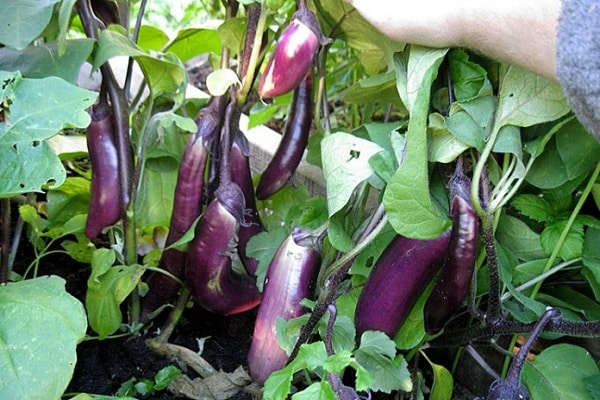
Disease and pest control
The king of the north is resistant to disease and pests. But if the summer turned out to be damp, then the bushes are periodically sprinkled with wood ash or crushed chalk. Eggplant bushes can be attacked by aphids or spider mites. In this case, the plants are treated 2 times a day, for a week, with an infusion of onion peels and garlic arrows.
Store-bought pesticides are used to control slugs. Meta and Groza preparations are suitable.
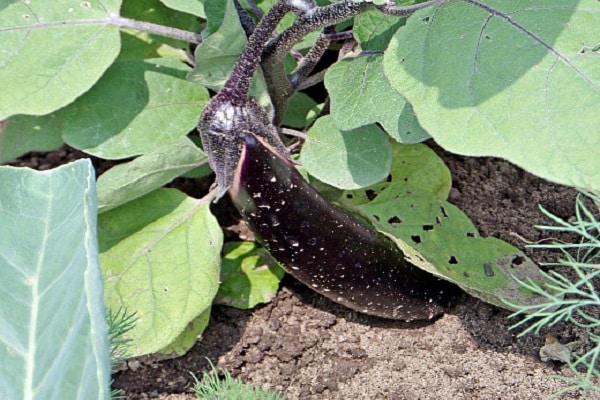
Harvesting and storage of crops
Collect the blue ones when the skin becomes glossy and bright. It is important not to overexpose the fruit as the flesh will turn brownish. In addition, an untimely harvest prevents the formation of new ovaries.
You can store fresh eggplants for no more than one and a half months. Store vegetables in a cool place, at a temperature not higher than 4 degrees. Beforehand, each eggplant is wrapped with a napkin.
